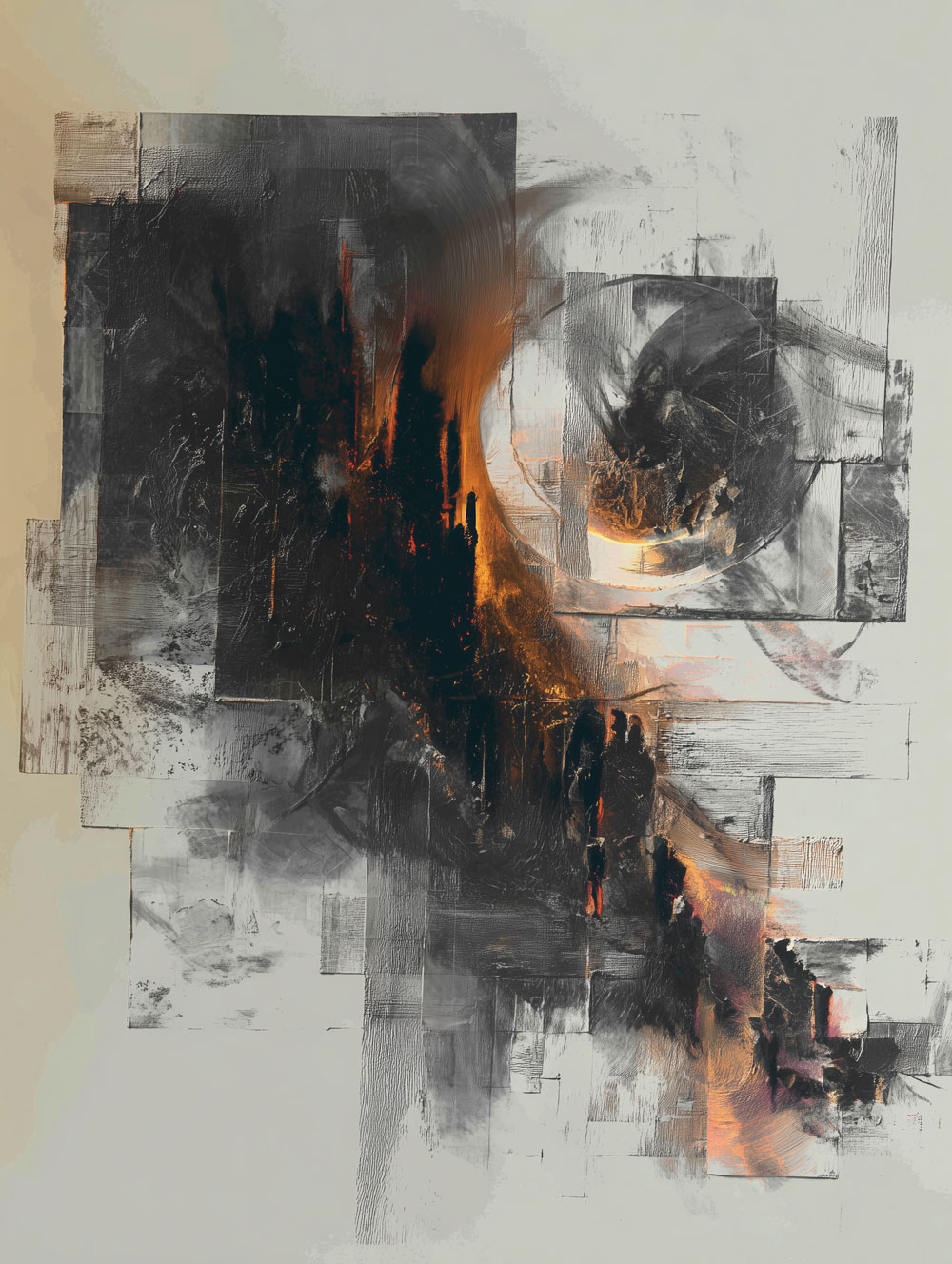Why We Can’t Stop Our Children from Dying of Gun Violence
by Irwin Kula

The recent shooting at Annunciation Catholic School in Minneapolis—where two children, ages 8 and 10, were killed and nineteen people injured as they sat in the pews during their first week of school—represents not just another tragedy but another iteration of a compulsive cycle that has trapped American society. We are collectively caught in what Freud would recognize as a “repetition compulsion” writ large, unconsciously reenacting the same trauma while believing we are trying to solve it.
When Minneapolis Mayor Jacob Frey said, “Don’t just say this is about thoughts and prayers right now; these kids were literally praying,” he touched upon something deeper than political critique. Yet even as he rejected empty platitudes, he was simultaneously performing his own scripted role in the very ritualistic pattern he critiqued. Every participant in this national drama—regardless of their political position or moral righteousness—is unconsciously colluding in a collective defense system that protects all of us from unbearable truths.
The Theater of Shared Defense
Our national response has become what psychoanalysts call a “basic assumption group”—a collective formation in which everyone plays predetermined roles that serve unconscious defensive functions rather than problem-solving goals. The TV anchors delivering breaking news with practiced solemnity; the experts offering familiar analysis; the politicians taking predictable positions; the religious leaders providing comfort; the polarized activists demanding action; the parents, depending on the fates of their children, expressing outrage, relief, or unfathomable grief; the educators implementing new protocols—all participate in an elaborate unconscious choreography.
This is not about moral equivalence. Individual positions may be factually accurate or morally defensible. But the rightness of any particular position matters less than understanding how all positions function within an unconscious system that “works” for everyone—allowing us to maintain our identities, our professional roles, our political affiliations, our ways of life, while experiencing ourselves as caring, engaged people who are doing something about this terrible problem. Our ritualized response to school shootings, going back to the Columbine shooting more than twenty-five years ago, protects us from confronting the transformations required to address this tragedy. At some level, we all know that truly addressing gun violence might require becoming different people, living in a different kind of society, organizing our relationships to power and violence in radically different ways. Fighting the good fight, we are unconsciously participating in a habitual ritual that discharges collective anxiety without disturbing the deeper systems generating it.
What makes this system particularly insidious is its interdependent entangled nature. We need each other to play our prescribed roles. The gun rights advocate needs the gun control advocate to remain focused on legislative solutions rather than deeper cultural transformation. The mental health expert needs the political pundits to avoid examining how our economic system commodifies psychological suffering. The security consultant needs school administrators focused on hardening targets rather than questioning what kind of society requires fortified schools. Everyone gets something from this arrangement, even as our children continue to die. Media gets compelling content. Politicians get opportunities to demonstrate values to their base. Experts get platforms. Advocates get causes that provide meaning and identity. Parents get the illusion that someone, somewhere, is working to protect their children. Religious leaders get opportunities to provide comfort in the face of meaninglessness.
Most crucially, all participants get protection from the unbearable recognition that we collectively lack the psychological, political, and cultural capacity to create a society where children are truly safe. This recognition would be more devastating than individual tragedies because it would shatter our fundamental belief in our own competence as adults and as a civilization.
Our seemingly intractable political disagreements protect us from having to face this collective helplessness. As long as we can blame “those people” for preventing solutions, we avoid confronting the possibility that there may be aspects of this problem that exceed our current capacity to address or that we are implicated subjects in enabling. This is why evidence rarely changes minds in these debates—the psychological function is not to solve the problem but to manage the unbearable anxiety of the problem being potentially unsolvable.
The Unbearable Unconscious Truths
Our paralysis protects us from several layers of unconscious knowledge:
- The American collective unconscious: Acknowledging the extent of America’s gun violence problem would require confronting a “narcissistic wound”—the collapse of our idealized self-image as a society that protects children and values life above all else.
- The economic unconscious: Gun violence functions as disaster capitalism. Security consultations, active shooter training, bulletproof backpack sales, and school fortification contracts surge after each tragedy. The same industries we trust to solve this problem have economic interests in perpetuating it.
- The political unconscious: Mass shootings create “shock doctrine” conditions—moments of collective trauma that make populations more willing to accept authoritarian solutions. Fear and social fragmentation serve specific functions in maintaining hierarchical power structures.
- The cultural unconscious: Mass shooters are not aberrations from American culture but extreme expressions of it. They embody the same cultural scripts about masculine violence and redemptive force that pervade our entertainment, foreign policy, and everyday understanding of conflict resolution. Not surprisingly, American culture exhibits a “splitting defense” around violence that operates across all political positions. We are horrified by violence against children, yet violence—in some form—is the fundamental solution. Advocates for gun rights split “good” defensive violence from “bad” criminal violence. Advocates for gun control split “good” state violence (police enforcement of gun laws) from “bad” civilian violence. Politicians and school administrators split “good” armed security from “bad” armed perpetrators who are predominantly disturbed young males. These splitting defenses allow all participants to maintain their moral self-image as opponents of violence while unconsciously relying on “violent” solutions.
- The therapeutic unconscious: In framing mass shootings as mental health problems, we avoid acknowledging that they might be rational responses to irrational social conditions. We treat individuals who cannot adapt to a sick society as the problem rather than examining what kind of society systematically produces such individuals.
- The developmental unconscious: We are literally raising generations of children whose psyches are being shaped by the expectation of violence, whose developing nervous systems are being conditioned to exist in a state of chronic hypervigilance. We are conducting a massive, uncontrolled experiment in childhood trauma, raising generations whose fundamental sense of safety has been systematically shattered while teaching them their lives are less valuable than adults’ political positions—creating exactly the kind of dissociated, traumatized population that produces more violence.
The most terrifying unconscious knowledge we share is not that we disagree about solutions but that we might be facing something requiring cultural transformation none of us can imagine implementing. Facing this would require acknowledging that our entire way of organizing society—our economic system, political system, cultural values around individualism and violence, child-rearing practices, understanding of masculinity and power—might need fundamental reconsideration. It would require us to face the full magnitude of the problem without dissociating—acknowledging that this is the 44th school shooting in this country since January and sitting with what that number means for our collective psyche. It would mean integrating our split defenses around violence and examining how our solutions emerge from the same violent imaginary that creates our problems. It would require confronting the narcissistic wounds to our national self-image and genuinely learning from societies that have successfully addressed this problem. It would demand acknowledging the intergenerational trauma we are creating and taking responsibility for what we are teaching our children about the value of their lives.
Ultimately, America’s paralysis on gun violence represents an encounter with the Lacanian “Real”—the traumatic kernel of experience that resists symbolic integration. Our ritualized responses are attempts to cover over this “Real” with familiar symbolic structures (political debate, policy proposals, cultural explanations) that give us the illusion of understanding and control. But the Real keeps returning—in Minneapolis, in Uvalde, in Parkland, in Sandy Hook, in the endless series of tragedies that our symbolic systems cannot metabolize. Until we develop the collective capacity to face this Real directly, to sit with the unbearable anxiety of not knowing how to fix this problem, we will remain trapped in the compulsion to repeat the same inadequate responses while our children continue to die. We may well need different policies, but first we must understand why we cannot implement the policies that already exist, why we cannot learn from the evidence that already exists, why we cannot already protect the children we claim to love above all else. Our conscious political disagreements are not the problem. Our unconscious psychological investments in maintaining the very system that traumatizes us are. The path forward requires not just political courage but psychological courage—our willingness to face what we have become and what we are creating in our children’s developing psyches. Until we can do this work at the level of our collective unconscious, our conscious efforts will continue to reproduce the very patterns they claim to address.
- Irwin Kula is a disruptive spiritual innovator and rogue thinker. As President Emeritus of Clal–The National Jewish Center for Learning and Leadership, a do-tank at the intersection of innovation, religion, and the sciences of human flourishing, he has had the privilege to work with leaders from the Dalai Lama to Queen Noor and with organizations, foundations, universities, and businesses around the world. A seventh-generation rabbi, he is the author of the award-winning book Yearnings: Embracing the Sacred Messiness of Life (2006), creator of the film Time for a New God (2004) and the public TV series Simple Wisdom (2003), and is a cultural pundit in both traditional and new media. Helping people navigate our ever-complex world with greater passion, purpose, creativity, and moral imagination, he is co-founder, with Craig Hatkoff and the late Harvard professor Clay Christensen, of the Disruptor Foundation, whose mission is to raise awareness of and encourage the advancement of disruptive innovation theory and its application in societal-critical domains.
- Email: ikula@clal.org
ROOM is entirely dependent upon reader support. Please consider helping ROOM today with a tax-deductible donation. Any amount is deeply appreciated. |





